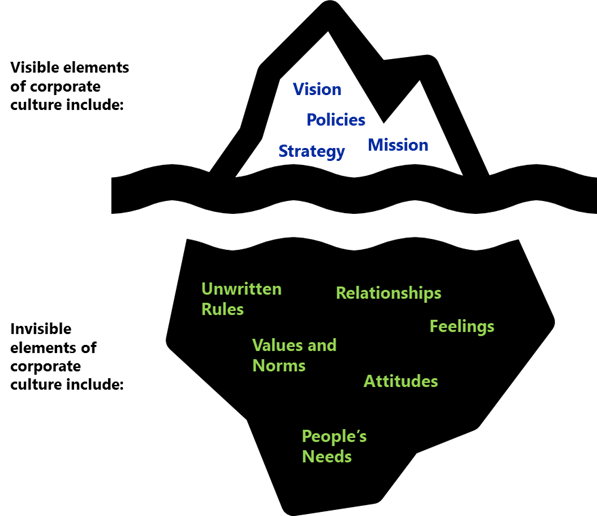Align Your Change Strategy with Culture: Unlock Lasting Organizational Success
Organizational culture, the right way to understand it is to picture yourself as a tourist (employee) in a new country (organization). As a new employee, you step into a workplace with its own set of values, traditions, and ways of doing things. Sometimes, everything clicks, and you fit right in. Other times, it feels like navigating a foreign land. This is exactly how culture impacts your performance, either good or bad. In simple terms, organizational culture is the mix of values, attitudes, beliefs, and behaviors that shape the work environment of a company.
We often say that culture is what makes a company excel above the rest of the players. But do we really understand how important it is when it comes to implementing changes, whether on a company-wide or individual level?
Why should You Align Your Change Strategy with Culture?
According to a study by McKinsey, about 70% of transformation initiatives fail, and a major chunk of those failures is due to cultural issues.[i] Harvard research also points out that one of the top reasons change management strategies fail is due to the mismatch between the company’s culture and the strategy itself.[ii] Understanding organizational culture allows leaders to identify potential obstacles and capitalize on strengths during times of change.
If a change initiative doesn’t align with the company’s existing culture, it faces an uphill battle. Employees might resist the change, especially if they don’t believe the organization will support it long-term. This distrust can create a barrier to success. That’s why it’s critical to assess your culture realistically and base your change management strategies on that understanding.
The Power of Culture in Driving Change
The strengths of an organization’s culture, when used wisely, can make change initiatives like digital transformation or new processes much easier to implement. A culture-driven approach helps employees relate to the changes more quickly, with less resistance.
To understand culture better, let’s look at the “Iceberg Model of Culture,” created by Edward T. Hall. Like an iceberg, a lot of a company’s culture lies beneath the surface. What you see above the water, like mission statements and strategies are easy to grasp. But below the surface, there are norms, relationships, and unspoken rules that are harder to recognize. These invisible elements often have the most impact on how changes are received.[iii]

Figure 1: Iceberg model of corporate culture, Edward Twitchell Hall, 1989
Organizational Culture Assessment: Why It’s Vital
A recent study found that 68% of executive teams are reassessing their company’s culture to adapt to the new normal of virtual and hybrid work[iv]. As organizations are experiencing rapid changes in their ways of working, understanding both the visible and invisible elements of culture has become a priority for leaders. There isn’t a right or wrong culture, but the key is to figure out how well it supports the changes you want to implement.
One useful tool for this is the Organizational Culture Assessment Instrument (OCAI)[v], which is based on the Competing Values Framework (CVF). This framework defines the organizational culture into four major categories:
- Collaborative or Clan Culture–People-oriented
- Creative or Adhocracy Culture–Innovation-oriented
- Controlled or Hierarchy Culture–Process-oriented)
- Competitive or Market Culture–Achievement-oriented
Based on the dimensions, internal-external and stability-flexibility, they can be further grouped into:

Table 1: Four culture types emerging from Competing Values Framework, R.E. Quinn and J. Rohrbaugh, 1983
Here, internal orientation refers to organizations that focus on internal development and prefer to integrate activities internally, with collaboration being the key element. On the other hand, external orientation is more market-driven, focusing on the latest trends, customer wants, competitor benchmarking, thereby creating a plan of action based on the external environment. While both these attributes are required for an organization to become successful, based on their culture, we often experience one of these as a dominant preference.
Similarly, the dimension of flexibility focuses on adaptability to ever-changing circumstances, with people being the key element, whereas stability focuses on structures, procedures, and plans, tending to control circumstances with these elements. Understanding which type of culture your organization leans toward can help you craft a more effective change strategy.
The OCAI takes into consideration these four dimensions and tests the organizational culture based on the following six aspects:
- Dominant characteristics
- Leadership style
- Employee management
- Organizational glue
- Strategic emphases
- Success criteria
By surveying employees across these areas, you can create a clear profile of your company’s culture. This will give you a starting point for aligning your change strategy with the existing culture.
Factors That Drive Change Success
To make your change efforts successful, you need to first identify any cultural barriers. Once you know what’s working and what’s not, you can plan a strategy that includes things like getting stakeholders involved, clear communication, and training to help employees adapt.
Take L’Oréal for example. They’ve built a culture that values innovation, allowing them to successfully shift to being a “Digital First” company. This transformation made them more agile and responsive to changing consumer demands.[vi]
So, how can you create that kind of environment in your own organization? What are the cultural elements that might be holding you back? These are important questions to consider when planning for change.
Final Thoughts
Organizational culture plays a huge role in the success of any change initiative. By understanding your company’s culture and aligning your strategy accordingly, you set the stage for a smoother, more successful transformation. Whether you’re rolling out new technology or changing how your team works, don’t underestimate the power of culture in shaping the future of your organization.
[i] Culture: 4 keys to why it matters, Mckinsey, 2018: https://www.mckinsey.com/capabilities/people-and-organizational-performance/our-insights/the-organization-blog/culture-4-keys-to-why-it-matters
[ii] 7 Reasons Why Change Management Strategies Fail and How to Avoid Them, Harvard Division of Continuing Education, 2022: https://professional.dce.harvard.edu/blog/7-reasons-why-change-management-strategies-fail-and-how-to-avoid-them/#content
[iii] Beyond Culture, Edward T. Hall, 1976: https://books.google.co.in/books/about/Beyond_Culture.html?id=reByw3FWVWsC&redir_esc=y
[iv] How to Build a Strong Organizational Culture, Gartner, 2022: https://www.gartner.com/en/articles/two-years-into-the-pandemic-organizational-culture-is-more-important-than-ever
[v] Organizational Culture Assessment Instrument, Kim S. Cameron, 1999:
https://www.ocai-online.com/about-the-Organizational-Culture-Assessment-Instrument-OCAI
[vi] Decoding the Digital Transformation, L’oreal: https://www.loreal.com/en/beauty-science-and-technology/beauty-tech/digital-transformation/#:~:text=A%20’Digital%20First’%20Company&text=For%20L’Or%C3%A9al%2C%20the%20digital,a%20’Digital%20First’%20company.
Latest Blogs
Introduction What if training powerful AI models didn’t have to be slow, expensive, or data-hungry?…
Pharmaceutical marketing has evolved significantly with digital platforms, but strict regulations…
Leveraging the right cloud technology with appropriate strategies can lead to significant cost…
Introduction The financial industry drives the global economy, but its exposure to risks has…




